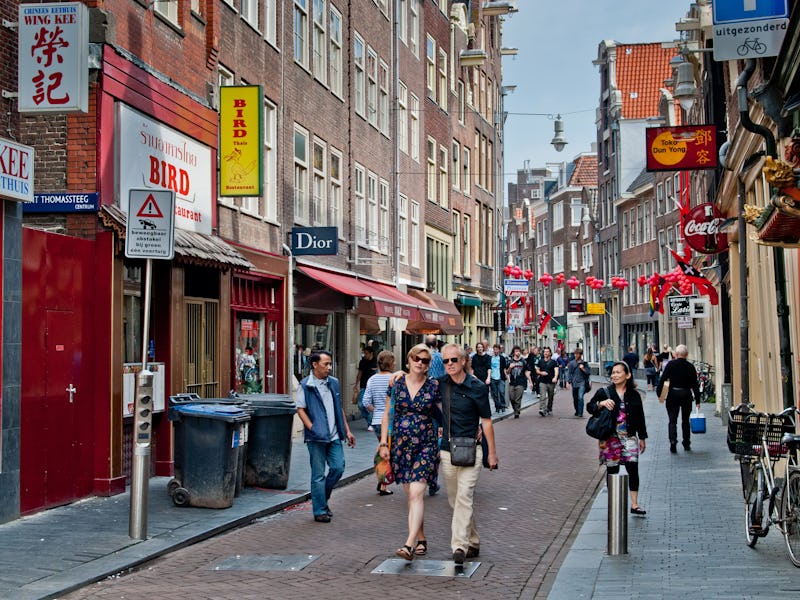Video Shows How Bike-Crazy Amsterdam is Designed for People, Not Cars

You might not even realize it, but in the United States, we’ve designed our world for the car. But a new video up-ends the notion that American’s car-dominated culture is the only way to go.
On a visit to Amsterdam, the bicycling capital of the world, UX designer Travis Eby filmed himself biking down a local street. It starts out like any other video — the camera’s focused on the handlebars, the red pavement just below. But as he lifts the lens up, the difference between the Netherlands and the U.S. becomes immediately apparent.
Instead of biking his way through cars and traffic lights, Eby is surrounded by children playing, people biking, and small garden plots. His accompanying Tweet calls out the fact the street in Amsterdam isn’t anything special at a structural level — the existing infrastructure has just been deliberately repurposed to better serve people.
“This street in Amsterdam = width of any street in Brooklyn,” Eby writes of the 28-second clip that’s received 4.8k retweets and 9k likes since it was posted Tuesday. “Look what’s possible when you don’t prioritize storage for cars.” Eby’s followers replied with stories of other cities that place a similar emphasis on bikers and pedestrians, including Mexico City’s car-free Sundays and Copenhagen’s underground parking garages.
The Twitter community also responded with some criticism, pointing out that Brooklyn is much more populous than Amsterdam — and a lot hillier — making a true comparison of the two cities difficult.
But to take Eby literally, here’s a photo of a Brooklyn street of approximately the same size as the one he biked in Amsterdam. Instead of kids and gardens, it’s dominated by cars, stored and in motion.
A street in Brooklyn, dominated by cars.
Back in the 1950s, Amsterdam was far from the bicycling haven it is today. The Dutch car culture at that time was just as intense as in the United States and thousands were dying in traffic accidents. At the tragic peak in 1971, about 3,300 died, including more than 400 children.
Enter Dutch bicycling activists, who decided to forcibly turn the tide, protesting against “child murder” and promoting the health, environmental, and psychological benefits of biking. And, while cars have never disappeared in the Northern European country, the bike now dominates.
By 2015, the Netherlands boasted about 22,000 miles of bike paths. The average person now bikes 1.8 miles a day and about 600 miles in a year. While traffic deaths have gone done, the rate of bike theft in the Netherlands has shot up, with 558,000 people reporting a stolen bike that year. Mostly, it’s also allowed Dutch cities to recenter themselves around citizens — not their vehicles.
Bike path in Rotterdam, the Netherlands.
See also: Future Cities | Amsterdam